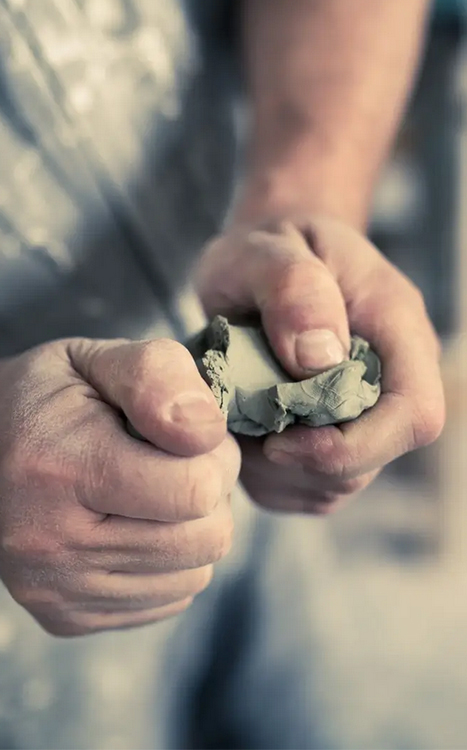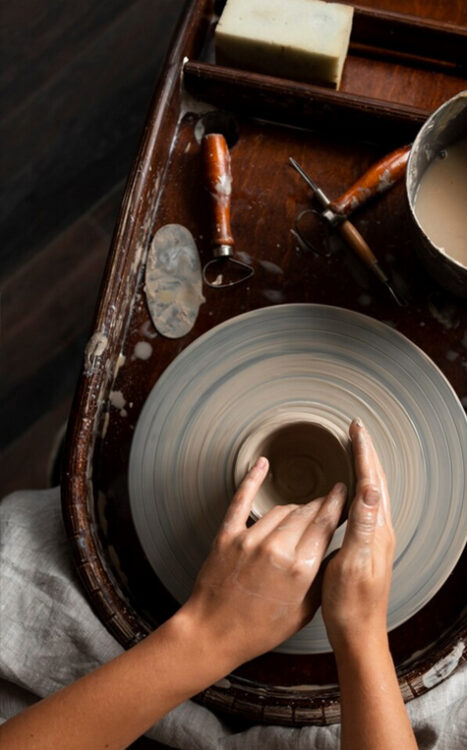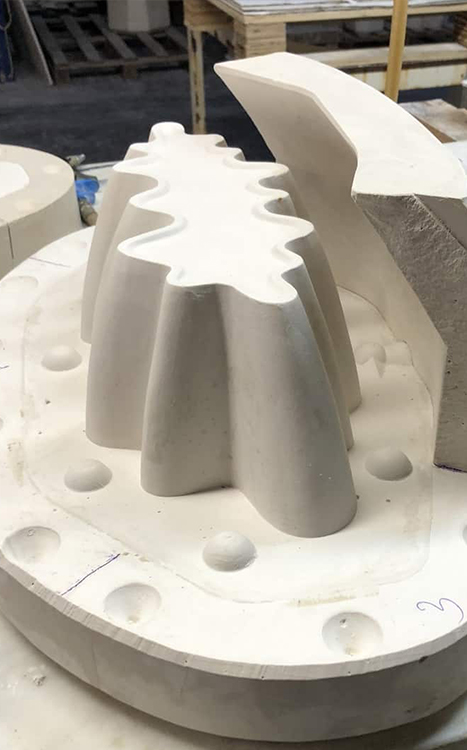MODELING TECHNIQUES
HANDBUILDING TECHNIQUE
The oldest and most basic method of creating clay objects is via hand modeling. Clay may be used to create practically anything. Because it is so flexible, you can create practically anything after you master a few basic ceramic techniques.
There are three different types of hand modeling techniques:
PINCHING TECHNIQUE
Pinching is the oldest, more intuitive and simple way of making ceramics.
With a ball of clay, poke a hole in the center with the thumb, and gradually hollow it out and open the walls of the bowl until you get the shape you want.

SLAB BUILDING TECHNIQUE
The pupose of this tecnique is to obtain slabs of clay to build all types of ceramics. Ceramic plates are joined together to form the desired object using slip, which is more liquid clay.
COIL POTTERY
The basic idea behind this method is to create coils with a specified thickness depending on the size of the ceramic piece. Once the clay coils are ready we have to build a base of slab. We then gradually build the walls by adding the coils around the base and give the pot the desired shape, such as a bowl, a vase, etc. To attach each coil we need to use slip so they are securly bonded. Once the shape is finished, we can blend the coils from inside and outside and to have a smooth looking pot.
WHEEL THROWING

One of the most popular ways to create ceramic objects is by using the throwing wheel, which requires a lot of dedication, patience, and practice. The ceramic object is molded by turning a ball of clay that has been placed on top of the throwing wheel using your hands.
The throwing whell makes it easier to produce large quantities of uniformly sized pieces,and production is considerably increased.
Its origins are in Egypt, Asia, and the Near East. It is a very old technique, dating from 3000 to 5000 B.C.
CENTERING
Centering is the most difficult step. It involves placing the clay ball in the center of the wheel and making sure that it is perfectly centered when rotating; otherwise, it would be very difficult to work and we would have to repeat the process. Centering the ball of clay is usually the first step in learning to use the throwing wheel.
CONING THE CLAY
Coning is the process of molding the clayball with both hands up and down until it becomes a cone.
By doing this, we create a more uniform and homogeneous mass, we also get rid of the air bubbles so that we can start shaping the ceramic object we want to create. The ceramic piece’s walls are then gently lifted to make the desired ceramic piece.
FINISHINGS
After the pot or ceramic object is completed, you can give it various textures, embellish it with handles, and more.
SLIB CASTING
Slip casting with plaster molds is another extensively utilized method for producing ceramic items on an industrial scale.
Prefabricated molds with predetermined designs are available for purchase at specialized shops.
Another choice is to create the molds ourselves using a desired piece or object that we wish to replicate as a model.
Ceramic casting is growing in popularity and gives the amateur the opportunity for a small quantity production.

PREPARING A MOLD
To create a mold, an object must be selected. This object may be made of any material, including wood, iron, ceramic, and plastic.
Once we have the object to recreate, it is crucial to wet it with wax or soap before coating it in plaster to prevent it from sticking to the mold. One-piece molds are the simplest.
POURING THE CLAY SLIB
The slib, which is liquid clay, is poured into the mold once it is completed.
When it has the right consistency, we pour it out of the mold and let the object dry.

 ...
...